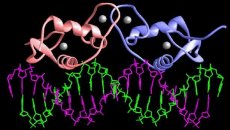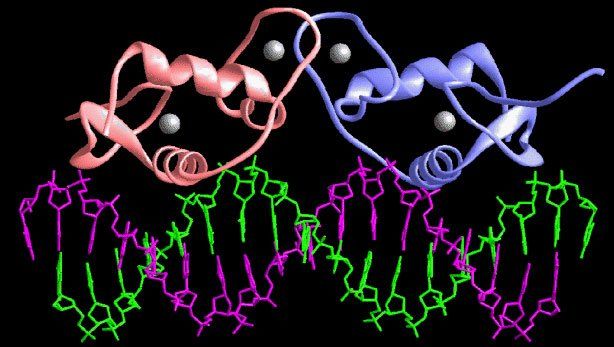Medical expert of the article
New publications
How do estrogens affect a woman's weight?
Last reviewed: 04.07.2025

All iLive content is medically reviewed or fact checked to ensure as much factual accuracy as possible.
We have strict sourcing guidelines and only link to reputable media sites, academic research institutions and, whenever possible, medically peer reviewed studies. Note that the numbers in parentheses ([1], [2], etc.) are clickable links to these studies.
If you feel that any of our content is inaccurate, out-of-date, or otherwise questionable, please select it and press Ctrl + Enter.

How do the three types of estrogen affect women's well-being?
There are 3 types of estrogens: estradiol (E2), estrone (E1), estrol (E3). The level of these hormones in the female body depends on the amount of fat deposits, their density, genetic predisposition to obesity, as well as age characteristics. Of course, a woman's lifestyle, her habits and diet also play an important role in the hormonal background.
Since the hormonal balance becomes weaker and more unstable with each passing year, you simply have to monitor your hormone levels to avoid making irreparable mistakes and gaining weight. The consequences can be irreversible.
It is important not to miss the moment when estradiol becomes less and less, and the level of other hormones from the estrogen group fluctuates, and their effect on the body is completely different. Let's explain the issue of the influence of each of the hormones in more detail, so as not to get confused in the information.
Positive hormone beta-estradiol, or E2
Beta-estradiol is one of the most active estrogens, which is secreted in the body from the day a girl has her first menstruation until the onset of menopause. E2 controls more than 400 different functions of the body.
This includes vision, skin condition, muscle strength, and a good skeletal system. This hormone is also responsible for normal sexual desire.
What does a woman with low estradiol levels look like?
Imagine how a woman might feel when menopause sets in. This means that the ovaries are now producing less and less sex hormones. Accordingly, beta-estradiol too. Because of this, a woman's skin may look pale and flabby, her hair becomes dull, and her nails break.
Not only they suffer, but also the heart, blood vessels, and skeletal system. The circulatory system also suffers, blood flow slows down, the blood is saturated with oxygen much more slowly and worse.
If there is little beta-estradiol in the body, other hormones cannot compensate for its absence. True, another female hormone, estrone, is produced in adipose tissue. But it is not able to completely cope with the role of estradiol.
If you need to replenish the loss of estrogens in your body during menopause, then it is worth choosing estradiol over the other two of the three types. This will make it possible to replenish the chemical elements that were actively produced by the ovaries earlier, from the day of your first period until menopause.
Negative hormone estrone (E1)
This hormone will help a woman who is going through menopause. The fatty tissue of the female body can produce it even when the ovaries have lost their functions. The production of beta-estradiol slows down or stops altogether, so the production of estrone makes it possible to somehow compensate for the loss of estrogens.
But don't be too quick to rejoice. Research shows that estrone can provoke diseases such as cervical cancer, breast cancer. Especially in women who are prone to obesity and who are over 45 years old.
Where is estrone formed?
It is synthesized by the liver, ovaries and adrenal glands, as well as adipose tissue. Estrone is used in the body to reproduce estradiol. However, these processes occur in the body even before menopause.
After menopause, estrone is converted into estradiol not so actively and not in such quantities. The reason is the almost complete cessation of ovarian function. Although adipose tissue can still be a source of estrone, and the adrenal glands and liver synthesize it in very small quantities.
Conclusion: Estrone, which is called the bad estrogen because of its ability to destroy the body, is produced more by those who have fat reserves. That is, by overweight women. More fat means more of the estrogen hormone called estrone.
One of the weakest female hormones is estriol (E3)
Why do doctors call this sex hormone one of the weakest? It is very small in non-pregnant women. It is much larger in pregnant women, since estriol is synthesized in the placenta.
Information about estrol is very controversial. Many instructions for medications say that estrol helps to lose weight, improve vision, memory, hearing and other body functions. In fact, this is far from true.
Firstly, estriol in non-pregnant women is negligible, so it cannot affect a woman's well-being. Secondly, it differs from estradiol in that it does not have a positive effect on memory, hearing, attentiveness, or the work of the heart or blood vessels. It can be considered a neutral hormone - neither good, like beta-estradiol, nor bad, like estrone.
Estrogen receptors: how and why?
Hormones are not just substances that affect well-being and appearance. They are a great method of transmitting information. Information about how organs and systems in the body work in themselves and how they interact with each other. To receive a hormonal message, like a telegraph, there are special paths between hormones - receptors. Along them, organs receive and deliver information and work according to it.
 [ 7 ], [ 8 ], [ 9 ], [ 10 ], [ 11 ], [ 12 ], [ 13 ], [ 14 ], [ 15 ]
[ 7 ], [ 8 ], [ 9 ], [ 10 ], [ 11 ], [ 12 ], [ 13 ], [ 14 ], [ 15 ]
Where are the hormone receptors located?

In all organs: heart, lungs, brain, muscles, blood vessels, bladder, intestines, uterus. And even eye muscles are the place where hormonal receptors pass. In particular, estrogen receptors.
But it is worth knowing that each organ has a different number of hormonal receptors, and they are distributed differently.
How are hormone receptor signals transmitted?
In order for organs and systems to understand these complex and often weak hormonal signals, there must be enough beta-estradiol in the body. Especially in those areas of the body where the hormone receptors are concentrated.
Is there a replacement for estradiol?
According to research, it is beta-estradiol that can activate and amplify signals from other hormones. And, as a result, facilitate their correct transmission between organs. When a woman approaches menopause, there is much less estradiol in her body, and then the ovaries stop producing it altogether. This leads to organ dysfunction. In particular, to metabolic disorders and, as a result, obesity.
Sometimes we read in the press that estrone could replace the work of estradiol, since even during menopause the body can produce it. But, unfortunately, this is not true. Estrone is too weak to take on all the functions of estradiol.
Therefore, you need to see an endocrinologist for examination and prescription of hormonal therapy.

